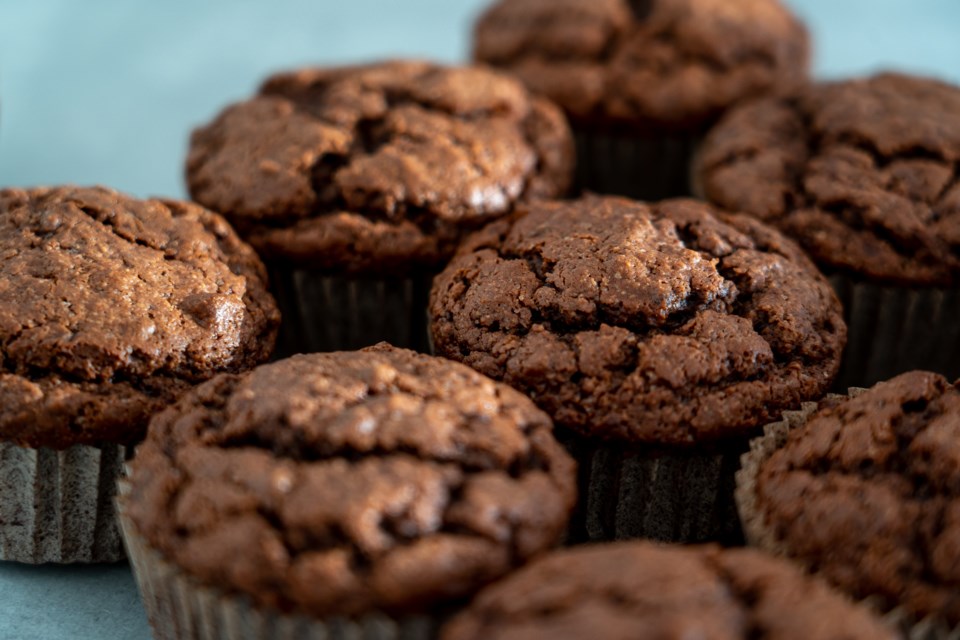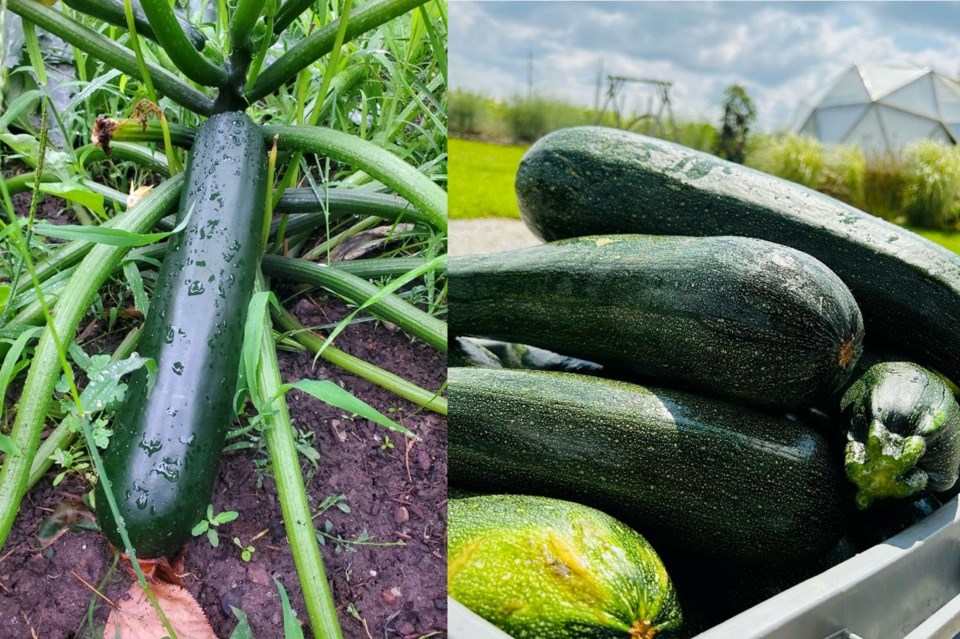“The trouble is, you cannot grow just one zucchini. Minutes after you plant a single seed, hundreds of zucchini will barge out of the ground and sprawl around the garden, menacing the other vegetables. At night, you will be able to hear the ground quake as more and more zucchinis erupt.” — Dave Barry
Summer is coming to an end and you know what that means: The garden harvest is in full swing and you’re starting to wonder just what to do with all of the wonderful fruits of your labour.
Like me, you may find yourself just a little overwhelmed with the burst in produce. It seems to me next to tomatoes if there is one plant to give us a run for our money it's the zucchini plants.
What does the amateur gardener do with what seems like a metric ton of green gold? You’ve already missed national “Sneak Some Zucchini Onto Your Neighbuor’s Porch Day,” which I recently learned is on Aug. 8. It's also an opportunity that I won’t miss again!
When faced with a mountain of green you might as well embrace the abundance and use up all the summer squash your garden throws at you.
I love zucchini. It’s the workhorse of the garden. It's mild flavoured and incredibly versatile. How did it become such a prolific friend to the gardener and chef alike?
Zucchini defined is a summer squash. This means that it is harvested while immature and its rind and seeds are still tender and edible. Skins can vary from dark green, light green to orange or deep yellow.
Botanically, zucchini is a fruit, but it is treated as a vegetable in a culinary context. It is most often harvested when around 25 centimetres long because it tends to lose some flavour and texture if left to grow older.
Ancestors of today's zucchini plant come from the Americas, native to today's Mexico and the northern parts of South America since more than 7,000 years ago.
European colonization of Americas brought this plant to Europe where large-scale cultivation began. Our modern zucchini were developed in Italy in the 19th century near Milan.
The name comes from an Italian word for squash — “zucca.”
It's also know by other names like “courgette,” which comes from the French word for this vegetable or “marrow” in the U.K.
Zucchini plants thrive in temperate climates and are very easy to cultivate. And as we know, they can produce significant yields which can sometimes be overwhelming! Some growers try to control production by harvesting the flowers, which are edible and when prepared correctly a wonderful delicacy.
With so many flowers and prolific growth, they require a greater number of bees for pollination. If they are not provided proper pollination, fruit abortion can occur – a case where a fruit will start growing, but withers and dies because not enough pollen grains are delivered to the female flower.
Lucky for us at Georgian College, we are a Bee Campus and our new resident honeybees can be found hard at work in our garden. Our zucchini haul this season certainly speaks to their skilled pollination services!
Zucchini can be prepared and eaten raw in salads or by cooking, steaming, boiling, grilling, stuffing, baking, frying, or as an ingredient in other types of food, such as soufflé, quick breads (similarly to banana bread) or a cake mix.
Zucchini is also a nutritious addition to your diet as they contain folate, potassium and vitamin A.
Many of the world’s countries and cuisines have dishes that feature zucchini. Just a few examples of its versatility and importance to our culinary tapestry:
Italian — “fiori di zucca”. Flowers of zucchini are stuffed, battered and deep fried.
Mexican — used to make soups or as a filling for quesadillas; corn or a wheat tortilla filled with a savoury mixture.
French — “Ratatouille” prepared with zucchini and summer vegetables by cooking them in oil and served alone or as a side dish.
Turkey — pancakes made from shredded zucchini, flour and eggs, lightly fried in olive oil and eaten with yogurt called “mücver.”
Bulgaria — zucchini is prepared as a snack by frying them and serving with a dip, made from yogurt, garlic and dill.
Egyptian — make a dish of zucchini with tomato sauce, garlic and onions.
You may come across a giant zucchini or two during the summer. You know what I’m talking about – zucchini that got missed and was left a bit too long on the vine. It’s a little too fibrous to enjoy on their own don’t worry, big zucchini are perfect for baking!
Zucchini is well suited as an add in for baked goods, because the delicate flavour allows it to blend in perfectly with sweet cake or bread batters. It also keeps baked goods moist without having to add a lot of extra oil or fat to the recipe.
Whenever I bake with zucchini, whether it be in a cake or in zucchini muffins, I always grate it super fine because it practically disappears into the batter. Most of the time, you probably wouldn’t even know it’s there if you can’t see it. As parents, my wife Kim and I found this fact incredibly useful in getting our son, Tyler, to eat his veggies.
Tyler, who was not particularly fond of zucchini, was more than happy to nosh down a couple of these chocolate zucchini muffins in a matter minutes and, according to him, were “freaking delicious.”
I totally agree with him.

Chocolate Zucchini Muffins
These muffins will last about three days at room temperature in an air-tight container. You can also freeze them for easy breakfasts later.
Ingredients:
1 1/2 cup granulated sugar
1/2 cup packed light brown sugar
1 cup vegetable oil
3 large eggs
2 teaspoons pure vanilla extract
2 1/2 cups all-purpose flour
1/2 cup unsweetened cocoa powder (I used Hershey's Special Dark)
1 teaspoon salt
1 teaspoon baking soda
1 teaspoon ground cinnamon
2 cups finely grated zucchini, slightly drained
1 cup semi-sweet chocolate chips
1/2 cup mini milk chocolate chips, optional
Instructions:
Preheat oven to 350 F. Spray muffin pan wells with nonstick cooking spray or line with paper liners.
In a large bowl with an electric mixer, beat together the sugars, oil, eggs, and vanilla until thoroughly combined.
In a medium bowl, whisk together the flour, cocoa powder, salt, baking soda, and cinnamon.
Gradually add the dry ingredients into the sugar mixture and mix until just combined.
Fold in zucchini until it is evenly distributed into the batter. Stir in semi-sweet chocolate chips.
Use a large cookie scoop (about three tablespoons) to distribute batter among the prepared muffin wells.
If desired, sprinkle mini milk chocolate chips onto the top of each muffin.
Bake in preheated oven for 18 to 22 minutes.
Did not grow any zucchini this season? Don’t worry, I’m sure a neighbour would love to gift you a squash or two!
Or you can always swing by any of our local farmers markets. I encourage you to get out and find some of our great local fruits and vegetables. They are at their peak and waiting for you!
Happy noshing!



